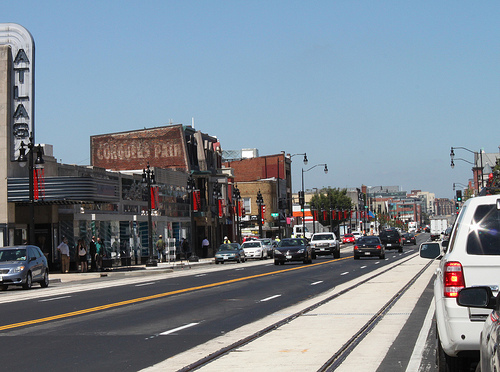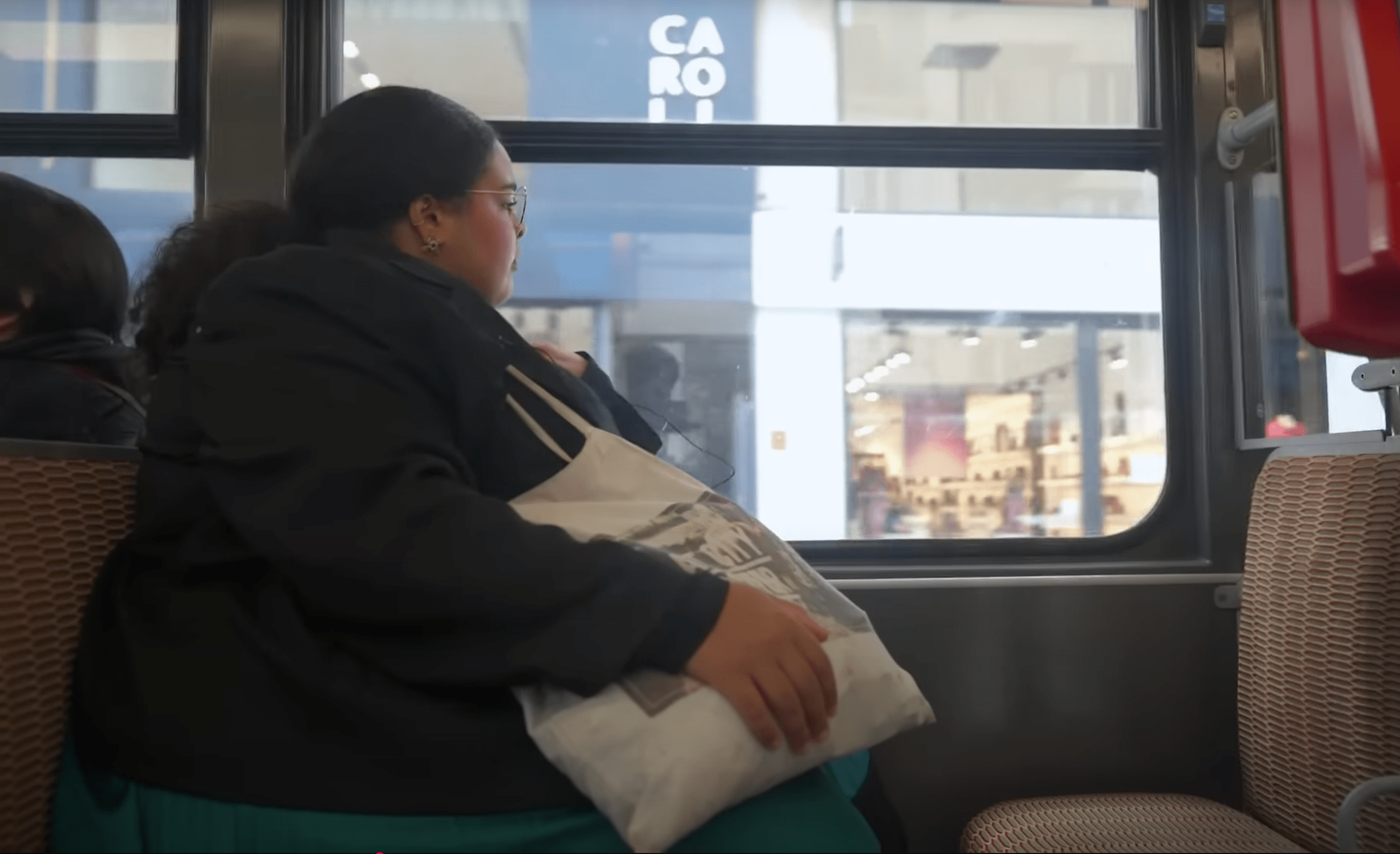
Streetcar service could finally begin this year in Washington, DC. Trial runs are already taking place. And the debate about how people on bikes will navigate the tracks is already raging.
Last week, the District Department of Transportation quietly proposed streetcar regulations that would ban bicycling within a streetcar guideway except to cross the street. Most immediately, that would prohibit bicycles on H Street NE, one of the city’s premier nightlife hotspots for young people, many of whom arrive on bikes -- in part because the area has been underserved by transit until now. There are no fewer than seven Capital Bikeshare stations along the corridor.
But a bike ban on streetcar corridors could have far broader implications when DC builds out its full streetcar network, which DDOT dreams of building out the network to eight lines over 37 miles throughout the city.
DDOT clarified on its Facebook page that it was proposing to prohibit bikes "in the area of the concrete surrounding the rails (effectively the lane the streetcar is running in)... Not the entire street right-of-way." That means, DDOT says, that cyclists can ride in the left lane -- which would undoubtedly lead to conflicts with cars accustomed to seeing cyclists hugging the right edge. If DDOT is serious about that, perhaps they could paint sharrows to inform drivers that bikes have a right to be in the left lane.
Either way, a bike ban is not the best way to deal with what is, by all accounts, a thorny situation.
The Washington Area Bicyclist Association acknowledges that “streetcar tracks can pose a legitimate hazard to bicyclists” but insists that “banning bikes is not an acceptable solution.”
It’s a “solution” that came up earlier this year in Tucson and in 2012 in Toronto, where a cyclist died when his wheel got stuck in the tracks of a streetcar system that doesn't even run anymore. Lots of cities have struggled to find ways to make the interaction between bicycles and streetcars less perilous.
As someone who has wiped out on streetcar tracks, I can attest that a solution is needed, or else H Street runs the risk of becoming a death trap for people on two wheels, sacrificing one form of sustainable transportation for the sake of another. Luckily, there are lots of options.
First of all, there’s no reason for cyclists to eat pavement because of abandoned streetcar tracks. Even if it’s expensive to remove the tracks, as cities usually claim, there’s no reason they can’t fill them in with cement.
Jonathan Maus at BikePortland, in search of a good solution for his city, found a German product called veloSTRAIL, a plastic insert for rail tracks designed to depress under a streetcar wheel but not a bike, but it’s designed for a different kind of rail than what they have in Portland.
Streetsblog’s own Steven Vance found an even simpler solution years ago. He advocates for rubber flanges in streetcar tracks that are depressed by the weight of a streetcar wheel but not a bike. The only place he knows of where it’s used in the U.S. is on the extremely low-traffic Cherry Avenue Bridge track in Chicago that sees no more than a few trains a month. Here’s a video that gives a pretty good idea of what it’s like to ride on these tracks:
WABA has talked to DDOT about the rubber idea, but it hasn’t really taken hold yet. Where streetcar lines haven’t been built yet, WABA demands that they be accompanied by separated bike lanes.
DDOT did build contraflow bike lanes on G and I Streets NE to divert cyclists away from H Street, but as WABA’s Greg Billing notes, “all the stores and restaurants are on H Street,” so at some point cyclists will leave those facilities and have to figure out a way to navigate H Street. Billing notes that riding on the sidewalk is a “very contentious issue in the community,” but given the astronomical number of crashes that have already happened since the tracks went in, it might be cyclists’ best option. After all, riding in the street could send cyclists to the hospital not only with their injuries, Billing said, but with a ticket -- and insurance might not cover their medical bills if they were breaking the law by riding in the street.
Seattle has also seen a rash of crashes due to streetcar tracks. Although a lawsuit brought by six injured cyclists was ultimately thrown out, it did result in better designs for new lines. The First Hill Streetcar will run in the center lane where there is not a dedicated bike lane, and separate bike lanes will be installed along about a mile of the route [PDF]. The city also striped a new bike lane along the existing streetcar line. You can see how the city marked a safe 90-degree crossing for cyclists in this Streetfilm.
Other places are trying out far more innovative ideas. In the Netherlands, separate bike lanes are the norm, keeping bicycles out of streetcar tracks, and bike lanes are engineered to always cross the tracks at a right angle. Alta Planning + Design has compiled other best practices and recommendations for bikes and streetcar tracks [PDF], mostly focusing on separated bike lanes and center-running streetcar tracks.
Sounds like a good idea for DC's seven unbuilt streetcar lines.





